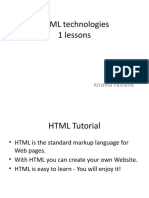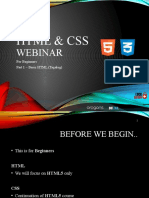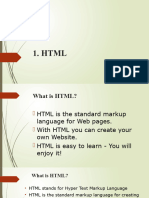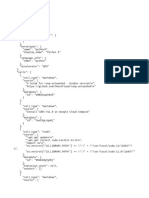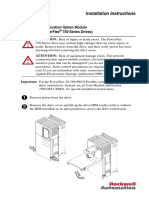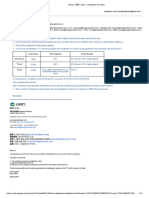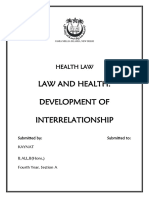0% found this document useful (0 votes)
28 views3 pagesIntroduction To HTML5
This document provides an introduction to HTML5, explaining its definition as a markup language used for creating web pages, its historical evolution from HTML 1.0 to HTML5, and the basic structure of an HTML document. It highlights key differences between HTML, XHTML, and HTML5, including syntax and multimedia support. Additionally, it includes a practice exercise for creating a simple webpage using HTML tags.
Uploaded by
boubaabdou064Copyright
© © All Rights Reserved
We take content rights seriously. If you suspect this is your content, claim it here.
Available Formats
Download as DOCX, PDF, TXT or read online on Scribd
0% found this document useful (0 votes)
28 views3 pagesIntroduction To HTML5
This document provides an introduction to HTML5, explaining its definition as a markup language used for creating web pages, its historical evolution from HTML 1.0 to HTML5, and the basic structure of an HTML document. It highlights key differences between HTML, XHTML, and HTML5, including syntax and multimedia support. Additionally, it includes a practice exercise for creating a simple webpage using HTML tags.
Uploaded by
boubaabdou064Copyright
© © All Rights Reserved
We take content rights seriously. If you suspect this is your content, claim it here.
Available Formats
Download as DOCX, PDF, TXT or read online on Scribd
/ 3




